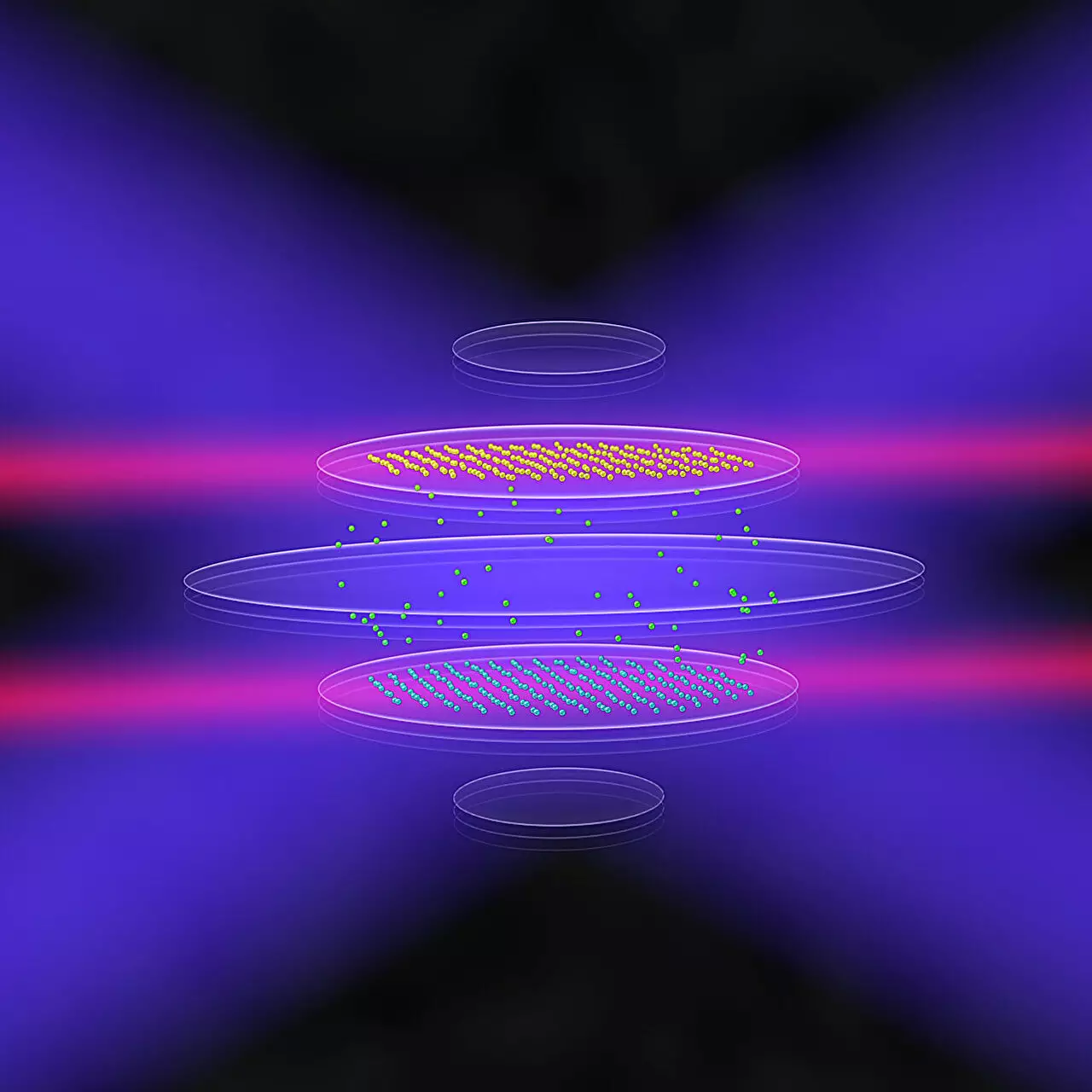Quantum technology is a frontier filled with potential, yet the journey toward operational quantum devices remains beset with challenges. Central to the development of many quantum systems—be it quantum computers or sensors—are trapped ions, which are charged atoms held in place by intricate electric and magnetic fields. Such systems predominantly operate with one-dimensional chains or two-dimensional planes of ions, leading to significant limitations in their scalability and overall functionality. While the aspiration has long been to create three-dimensional (3D) arrangements of ions to enhance these capabilities, the technical hurdles associated with maintaining stability and control complicate the realization of this vision.
The dynamic behavior of ions, influenced by both Coulomb forces and external confinement fields, has traditionally constrained researchers to simpler geometries. For years, scientists have envisioned stacking ions into complex 3D configurations, yet achieving this stability in multilayered arrays posed substantial challenges. Recently, however, a collaborative effort involving physicists from India, Austria, and the U.S. has sparked a promising avenue for overcoming these difficulties.
In a groundbreaking publication in *Physical Review X*, researchers—led by notable figures such as JILA and NIST Fellow Ana Maria Rey—have proposed a novel method for manipulating the electric fields that confine ions. This innovation has the potential to stabilize multi-layer configurations, offering a breakthrough in the quest for 3D quantum structures. According to Rey, the ability to trap large ensembles of ions in multiple spatially distinct layers presents an exciting opportunity to explore new quantum phenomena that were previously inaccessible in simpler, two-dimensional systems. Concepts such as topological chiral modes and teleportation may be within reach thanks to these advancements.
Trapped ions have emerged as front-runners in the race for quantum computing platforms, celebrated for their high controllability and the precision with which quantum operations can be executed. Utilizing laser and microwave pulses, researchers can manipulate ions to encode specific quantum information in the form of qubits. Additionally, the interactions between ions can be ingeniously harnessed for entanglement, a fundamental feature that diminishes overall system noise and enhances measurement fidelity.
A pivotal aspect of the researchers’ approach involves the utilization of Penning traps. These specialized traps are noteworthy for their ability to store significant quantities of ions—sometimes numbering in the hundreds or thousands—making them well-suited for experimental breakthroughs. Unlike traditional systems, Penning traps utilize a combination of electric and magnetic forces, effectively guiding ions into self-assembled crystalline structures.
Historically, Penning traps have primarily facilitated the arrangement of ions into simple two-dimensional layers or spheroidal formations. This is largely due to the linear increase of the confining electric field with distance from the center, thus naturally fostering the ions’ inclination toward simpler configurations. Nonetheless, the team aimed to modify these fields for greater variability, allowing for the emergence of more intricate bilayer structures. By introducing nuanced electric field variations, they successfully demonstrated the potential for stabilizing these multilayer arrangements.
The shift from two-dimensional to three-dimensional ion trapping portends a multitude of significant implications for the future of quantum devices. As Dr. Athreya Shankar, a postdoctoral researcher involved in the study, articulates, bilayer crystal formations may unlock capabilities for quantum information processing that remain elusive in simpler configurations. One particularly tantalizing possibility lies in the generation of entanglement between sub-systems situated at varying distances—a critical requirement in the development of robust quantum hardware.
The anticipation surrounding these discoveries is palpable among the research team as they prepare for experimental validation of the bilayer concept in their existing Penning trap setups. Should they succeed, the implications could reverberate through the field, spurring innovations in quantum hardware designs that leverage the advantages of three-dimensional spatial configurations.
Moreover, the research opens new avenues for quantum simulations and sensing applications. The unique behavior of ions in bilayer structures could mirror complex behaviors observed in strong magnetic fields, thus enhancing our understanding of quantum mechanics in controllable environments. As the authors point out, increased ion numbers could lead to improvements in the signal-to-noise ratio for crucial measurements, fostering new discoveries in fundamental physics.
The collaborative nature of this research—bridging institutions across India, Austria, and the U.S.—underscores the communal vigor propelling advancements in quantum technology. As the realm of quantum devices evolves, such innovative approaches are critical for unlocking the full spectrum of possibilities that quantum computing and sensing can offer. The pursuit of bilayer structures signals not just a technical evolution, but a transformative leap toward scalable, robust quantum systems that may redefine the landscapes of computing and measurement in the years to come.

